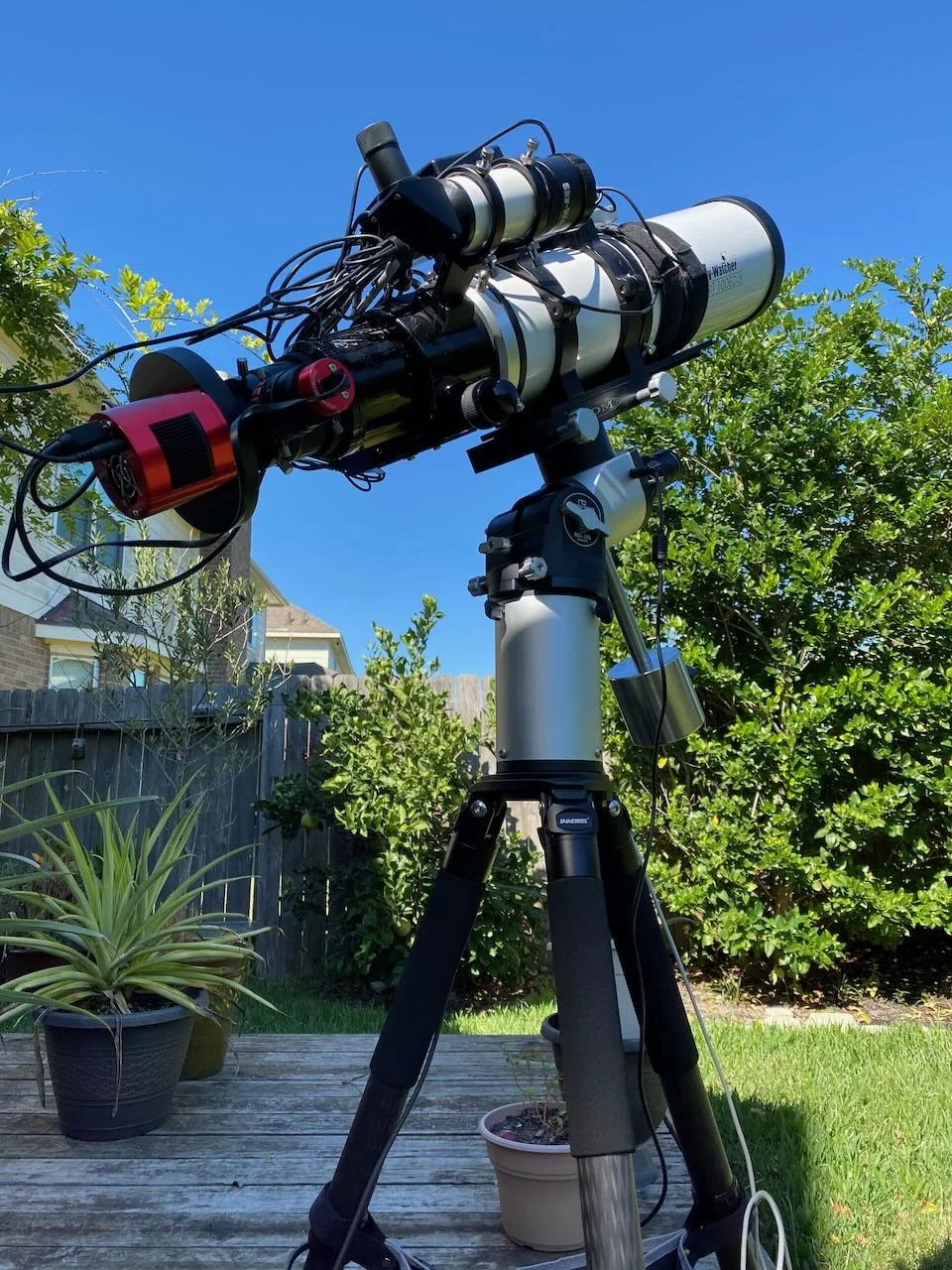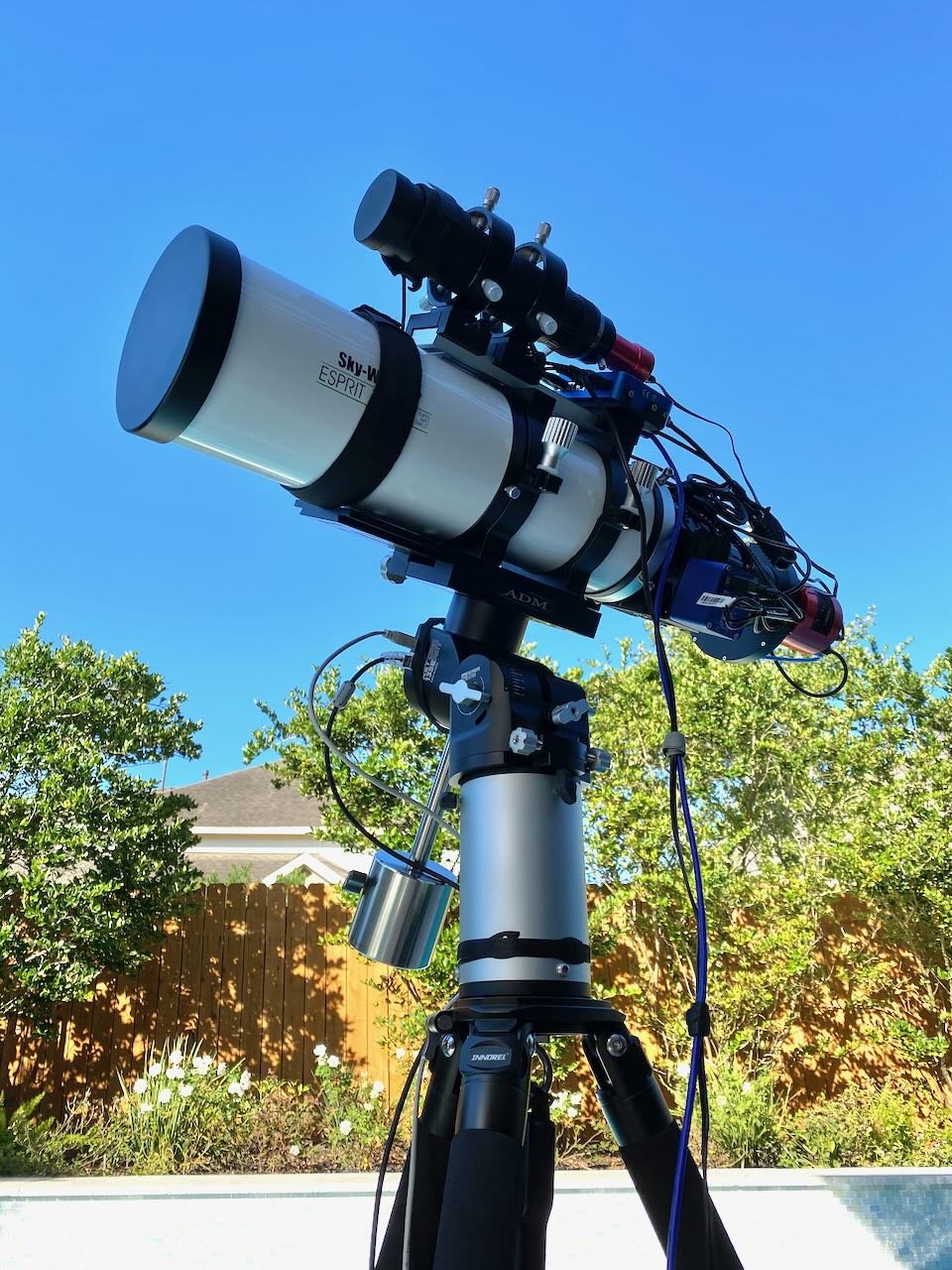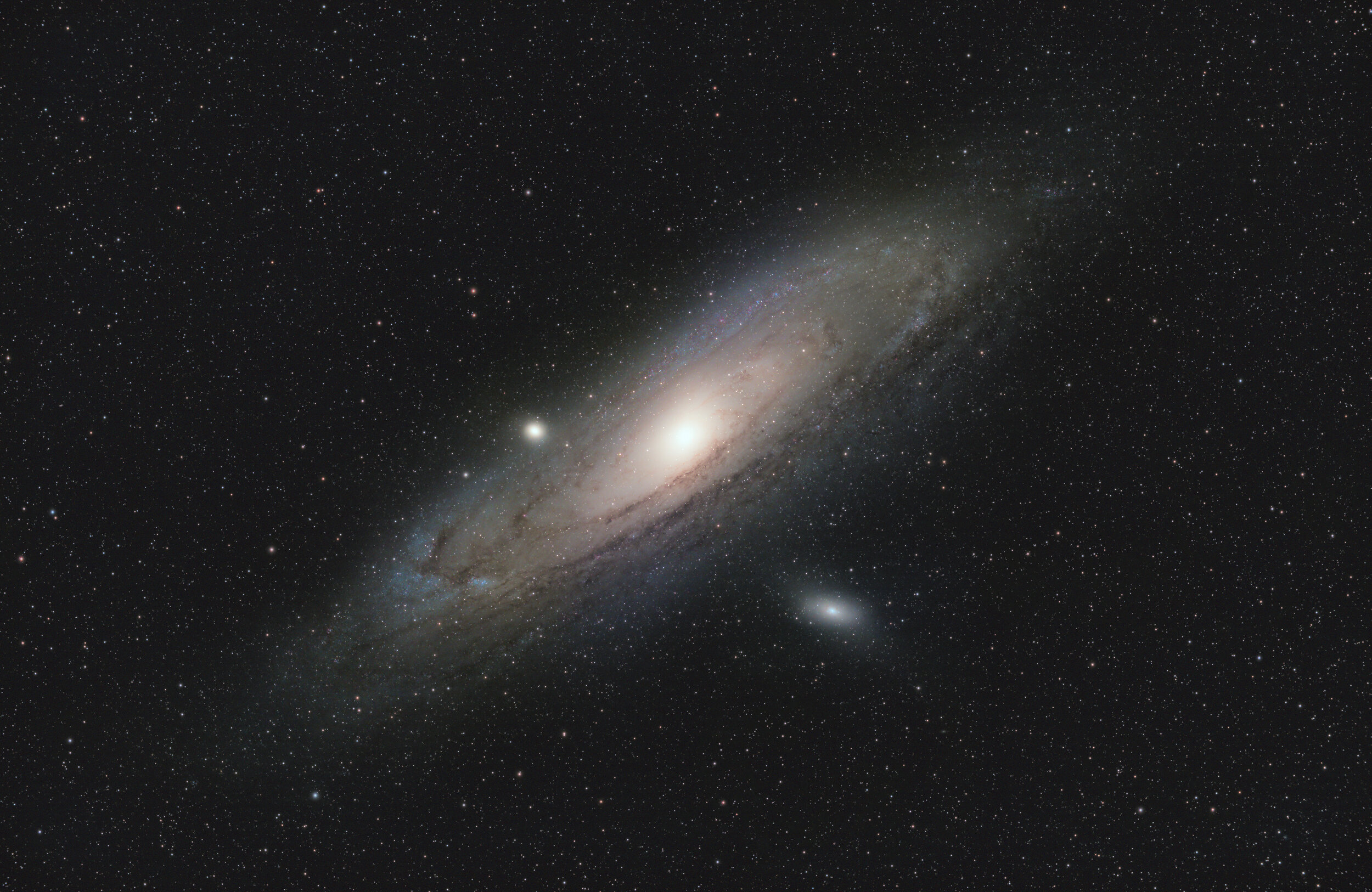Before sitting down to write this review, I spent a lot of time thinking about who is the customer this telescope was designed to address. Due to inflation and supply chain issues during the Covid pandemic prices for the Esprit have increased to an MSRP of $3,210. Relatively new Chinese companies have entered the market with less expensive options like the Askar FRA600 at $2,599, and the Askar 107 PHQ at $2,495. And to be fair, when I originally purchased the Sky-Watcher Esprit 100ED it was priced at a more moderate $2,400. So the price of this telescope is about $800 more than the competition.
You get what you pay for
So what do you get for $3,200? This is an extremely well built refractor. It’s built like a tank. It’s heavy, around 30 lbs with photography equipment attached. It’s a 100mm aperture F5.5 triplet APO telescope. This equates to a 550mm focal length. It uses high quality FPL53 and BK7 glass, and has been known over the years it’s been around that it’s one of the most well color corrected scopes at this price point. Users who have tested their Esprit’s have shown out of the box Strehl ratio’s of above .95, and with aftermarket collimation adjustments on an optical bench even higher can be achieved. The Esprit also readily supports imaging with up to full frame sensors like the ZWO ASI6200MM-Pro which I have used on this telescope.
Here’s a typical example of the quality you can expect from the Esprit 100ED. No color fringe right to the edge of the frame. Camera used here was a ZWO ASI2600MC-Pro.
The field of view available to you at 550mm focal length will allow you to image a lot of the larger galaxies and moderate sized nebulas. The gallery at the bottom of this review is nebula heavy because those are the objects that mostly fit this field of view really well. This gives you lots of flexibility for imaging and I think any imager should have a decent 100mm refractor in their arsenal of imaging telescopes.
Compared to the telescope’s current market challengers at the lower price point you have the Askar FRA600 which is 108mm F5.6, so a tiny bit slower, with cheaper glass that isn’t as well corrected. As you increase the speed of the telescope it becomes harder to correct the color, and the Askar FRA600 displays color fringe aberrations in almost all cases. To combat this, Askar released a slower F7 speed 107mm PHQ telescope. It still has the cheap glass, but exhibits less color issues than the FRA600 due to its slower speed. These are still very nice telescopes, but not up to the level of the Esprit 100ED.
To get faster speeds, or to support image sizes above full frame you need to start looking at premium telescopes from Takahashi, Astro-Physics and others that are going to be priced in the range of $6,000 and higher.
The best 4” refractor?
This leads me back to my original question…who is the intended audience for this telescope? I think it’s clear to me that this scope is for anyone who appreciates quality. To me this is a premium telescope at non-premium prices. It’s better than any scope that costs less at this size, and it’s as good as most scopes above this price point with the limitation that its speed is F5.5 and only supports up to full frame sensors. For most, these aren’t limitations at all.
Using the Astronomy.tools website you can check how your camera sensor size impacts the field of view you will be able to capture.
Because I’ve owned this telescope for a few years, I’ve been able to use it with lots of different cameras and mounts. Below this review you can find images I’ve taken with various sized ZWO cameras like the ASI294MM-Pro, ASI2600MC-Pro, ASI2600MM-Pro, and up to the full frame ASI6200MM-Pro.
They all perform extremely well with this telescope. The imaging train is very solid with no sag, so attaching a focus motor to the system is a no-brainer. You can even use the built in captain’s wheel camera rotator to rotate the camera with no impact to tilt. As mentioned earlier, this scope is very well made and I’ve never had to adjust for tilt on it. This is really the best 100mm refractor anyone can purchase at this price point.
Here’s a list of equipment that i’ve used over the years with the telescope:
ZWO ASI294MM-Pro, EFW8, Astrodon 5nm Filters
ZWO ASI2600MC-Pro, ZWO Filter Drawer, ZWO Duo-band filter
ZWO ASI2600MM-Pro, EFW7 36mm, Chroma 3nm filters
ZWO ASI6200MM-Pro, EFW7 2”, Chroma 3nm filters
Pegasus Astro Focuscube2 (though a ZWO EAF would work just as well).
Note: If you found this review valuable and wish to support myself and this website in any way please use any of the Agena Astro affiliate links on my site before you make a purchase and I’ll get a small kickback in return without any cost to you. Thanks for taking the time to visit my site.

































